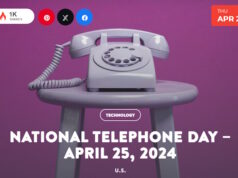
While there is some controversy as to who invented the ice cream cone, one of the earliest mentions of them showed up in French cookbooks around 1825. Originally referred to as “little waffles”, ice cream cones were waffles rolled into the shape of a cone.
Ice cream cones first became popular in the United States in the late 1800’s. Confectioners turned the first cones by hand. The ice cream cone made its debut at the World’s Fair in St. Louis in 1904. In 1912, an inventor from Oregon obtained a patent for a machine to make them. He sold his company to Nabisco in 1928, and they still make ice cream cones today.
The ice cream cone continues to be a popular treat for children and adults alike as more flavors of ice cream continue to be made available to please our palates.
From Wikipedia on the ice cream cone:
Traditionally ice cream cones were conically shaped. The first true edible conical shaped cone for serving ice cream was created at the St. Louis World’s Fair by Ernest Hamwi, a Syrian concessionaire in 1904. His waffle booth was next to an ice cream vendor who ran short of dishes. Hamwi rolled a waffle to contain ice cream and the cone was born. Paper, glass and metal cones, cups, and dishes were used during the 19th century in France, Germany, and Britain for eating ice cream. While many cooking books, some as early as 1770, mentioned pastry and creams in the same recipes there is no evidence that they are describing the ice cream cone that we know today.
Two enterprising ice cream salesmen independently invented and patented edible containers for ice cream. In 1896 Italo Marchiony was a successful ice cream salesman with over 40 push-cart vendors selling his edible containers filled with ice cream on the streets of New York City. He obtained a patent for a machine to make the containers in 1903. At about the same time an ice cream merchant in Manchester, England named Antonio Valvona obtained a U.S. Patent (1902) for a machine for producing edible biscuit cups. Examination of the patent drawings show that both inventions were for edible ice cream cups with flat bottoms and tapered sides.












